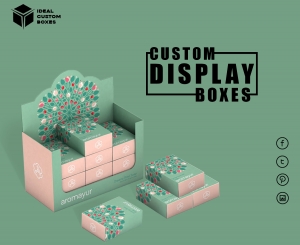please click here:
https://www.shdtimber.com/products.html
Introduction to Wenge Wood
Wenge wood has gained global recognition as one of the most distinctive exotic hardwoods. Known for its deep brown to nearly black color with fine, closely spaced grain lines, it is often chosen for luxury furniture, flooring, musical instruments, and decorative applications. This African hardwood combines durability with visual sophistication, making it stand out among other timber species.
In this article, we will explore the origins of Wenge wood, its physical properties, design appeal, applications, sustainability concerns, and how it compares to other popular hardwoods.
Origins and Natural Habitat
Wenge wood originates from Central Africa, particularly in countries such as Cameroon, Gabon, and the Democratic Republic of Congo. The tree, Millettia laurentii, can grow up to 90 feet tall and thrives in tropical forests. Its natural resistance to pests and its dense structure make it well suited for use in challenging climates.
Due to its limited growing regions, Wenge is considered rare compared to more globally available hardwoods like oak and walnut. This exclusivity contributes to its high market value.
Unique Appearance and Aesthetic Value
Wenge wood is prized for its dramatic coloration. Its base tone ranges from dark brown to almost black, highlighted with lighter brown streaks that create a striking contrast. The grain pattern is usually straight but can also appear slightly interlocked, adding to its bold visual identity.
Interior designers and craftsmen often use Wenge for projects where a statement piece is needed. Whether applied to high-end cabinetry, flooring, or custom guitars, Wenge conveys elegance and authority.
Physical Properties and Durability
The strength of Wenge wood is one of its defining characteristics. It has a high density, making it extremely durable and resistant to wear. Its Janka hardness rating surpasses that of oak and maple, meaning it withstands heavy foot traffic and prolonged use without significant damage.
Key properties include:
-
High density and hardness
-
Natural resistance to insects and fungi
-
Excellent dimensional stability once seasoned
-
Ability to accept finishes and polishes for enhanced beauty
These attributes make Wenge not only an aesthetic choice but also a practical one for long-lasting applications.
Common Applications of Wenge Wood
Thanks to its durability and unique look, Wenge is used in a wide variety of industries.
Furniture
Luxury furniture designers favor Wenge for dining tables, desks, and cabinetry. Its bold appearance works well in both modern minimalist spaces and traditional luxury interiors.
Flooring
Because of its hardness, Wenge is a top choice for flooring in upscale residences, hotels, and offices. It provides an elegant dark finish that pairs beautifully with light-colored walls and décor.
Musical Instruments
Luthiers use Wenge in guitar fingerboards, bass necks, and drum shells. Its density contributes to tonal clarity, making it popular among professional musicians.
Decorative Uses
Veneers, panels, and accent pieces crafted from Wenge add luxury to interiors, often serving as focal points in design schemes.
Comparison: Wenge Wood vs Other Hardwood Options
| Feature | Wenge Wood | Walnut Wood | Oak Wood | Teak Wood |
|---|---|---|---|---|
| Color | Dark brown to black with streaks | Rich chocolate brown | Light to medium brown | Golden to medium brown |
| Grain Pattern | Straight or interlocked, bold contrast | Smooth, fine, elegant | Prominent, coarse grain | Straight with oily texture |
| Hardness | Very high (excellent durability) | Medium hardness | Moderate hardness | High hardness |
| Resistance | Excellent against insects/fungi | Moderate | Good but needs treatment | Naturally resistant |
| Common Use | Luxury furniture, flooring, instruments | Premium furniture, gunstocks | Flooring, cabinetry, structural use | Outdoor furniture, boats |
This comparison highlights how Wenge stands out primarily for its darkness and superior hardness, giving it a niche appeal where strength and exotic aesthetics are valued.
Challenges in Working with Wenge
While Wenge wood is visually and structurally appealing, it presents certain challenges for craftsmen:
-
Splintering risk: Wenge has a coarse texture that may produce sharp splinters if not handled carefully.
-
Tool wear: Its hardness can quickly dull cutting tools, requiring frequent sharpening or the use of carbide-tipped blades.
-
Allergenic properties: Some woodworkers may experience skin irritation or respiratory reactions from Wenge dust. Proper protective gear is essential.
Despite these challenges, experienced artisans appreciate the wood's potential to deliver exceptional results with proper handling.
Sustainability and Environmental Concerns
The rising popularity of Wenge has raised sustainability issues. Overharvesting and illegal logging in African forests threaten its availability. Wenge is listed on the IUCN Red List as endangered, which means international trade is subject to restrictions under CITES (Convention on International Trade in Endangered Species).
For environmentally conscious buyers, sourcing Wenge from certified suppliers who follow responsible forestry practices is critical. Alternatives such as stained oak or engineered veneers may also serve as substitutes when sustainability is a priority.
Modern Design Trends Featuring Wenge
Contemporary designers continue to use Wenge in ways that highlight its exotic appeal. Some trends include:
-
Contrasting palettes: Pairing Wenge flooring with white walls for a clean, modern contrast.
-
Accent details: Using Wenge as a trim or inlays within lighter furniture.
-
Minimalist luxury: Combining Wenge with glass, metal, or leather to create sleek, upscale interiors.
-
Hybrid furniture: Mixing Wenge with lighter woods like maple for a dynamic two-tone effect.
These applications showcase how Wenge remains relevant in modern design while preserving its timeless exotic identity.
Care and Maintenance of Wenge Wood
To maintain the deep luster and durability of Wenge wood, owners should:
-
Clean regularly with a soft, dry cloth to avoid dust buildup.
-
Use specialized wood oils or polishes to maintain its sheen.
-
Avoid prolonged exposure to moisture, which can lead to warping.
-
Place protective pads under furniture to prevent scratches.
When cared for properly, Wenge wood products can last for decades without losing their elegance.
Future of Wenge in the Global Market
The demand for Wenge wood is expected to remain strong, particularly in high-end industries. However, sustainability concerns and trade restrictions may limit supply. Manufacturers and consumers alike must balance their desire for exotic aesthetics with responsible sourcing practices.
In addition, engineered alternatives that mimic Wenge's look are becoming more popular in furniture and flooring markets, offering a sustainable solution without compromising on design.
Conclusion
Wenge wood is more than just a hardwood—it is a symbol of strength, exclusivity, and sophistication. From luxurious interiors to musical instruments, it continues to capture the attention of designers, craftsmen, and homeowners worldwide. However, responsible sourcing and sustainable practices are key to ensuring that this exotic wood remains available for future generations.
Frequently Asked Questions
1. Is Wenge wood good for flooring?
Yes, Wenge is excellent for flooring due to its hardness, durability, and dark aesthetic. It is especially suitable for high-traffic areas.
2. Why is Wenge wood so expensive?
Its rarity, limited growing regions, and demand in luxury industries contribute to its high cost. Additionally, strict trade regulations increase its market value.
3. Does Wenge wood require special maintenance?
Wenge is naturally durable but benefits from regular cleaning and occasional polishing. Protective measures against scratches and moisture are also recommended.
4. Is Wenge sustainable?
Currently, Wenge faces sustainability challenges due to overharvesting. Buyers should look for certified suppliers or consider alternatives.
5. What woods are similar to Wenge?
Alternatives include dark-stained oak, walnut, or engineered veneers designed to mimic Wenge's color and grain.
Article Summary
Wenge wood is a rare African hardwood prized for its dark beauty, strength, and luxury appeal. Used in flooring, furniture, and instruments, it offers both durability and style. However, sustainability concerns and trade restrictions make responsible sourcing increasingly important.






